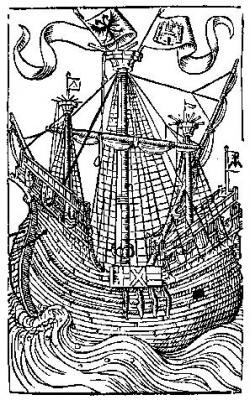-
Posts
13,303 -
Joined
-
Last visited
Content Type
Profiles
Forums
Gallery
Events
Everything posted by druxey
-
Russ is correct in most cases, but some contemporary models show a shallow socket attached to the bow planking.
-
As my grand-daughter, age eight, said yesterday, "I'm so quiet, 'cause I'm speechless!".
- 3,618 replies
-
- young america
- clipper
-
(and 1 more)
Tagged with:
-
Well, your method certainly has great results, Toni! Love the Muppet-eyed fish over the bridle port.
- 1,449 replies
-

HMS Alert 1777 by Jaekon Lee - 1/64
druxey replied to Jaekon Lee's topic in - Build logs for subjects built 1751 - 1800
The inner planking must end up with the deck clamps at the correct height for the weather deck, JK. Hopefully that will be the case! -
I'm sure about a brig, but ship-rigged vessels of that time period had 'permanent' boomkins.
-
Glad to read it didn't wrinkle, Toni. However, you will need to have sliding 'finesse' when placing frieze pieces, especially on curved surfaces such as the lower transom. It is virtually impossible to lay it down without adjustment.
- 1,449 replies
-

HM Mermaid Rigging questions (edited by admin)
druxey replied to Rick01's topic in Masting, rigging and sails
Chain was certainly becoming more fashionable and common during there industrial revolution, so its use here would not be particularly remarkable. As for the location of the 'barbie'; it's quite possible that, after mooring, the windlass drum was dismounted. One assumes that the ship was anchored for a long period of time here. -

HM Mermaid Rigging questions (edited by admin)
druxey replied to Rick01's topic in Masting, rigging and sails
Thanks for the url, Wayne. That is a great image. I imagine that cooking on deck was done for two reasons: one, limited below deck space and two, the climate.I imagine that is evidence of the first down under barbie! -
-
Rather than moistening the paper, it needs to be well soaked first. When it begins to dry on a flat surface (the wet shiny surface goes suede-like) then tape it down. You shouldn't have difficulty after that. You will need to treat the paper this way, as there is also moisture in the white glue you will use to attach the finished friezes later. Your first attempts at painting look pretty good!
- 1,449 replies
-

HMS Sphynx by TBlack - 1:64
druxey replied to TBlack's topic in - Build logs for subjects built 1751 - 1800
Nice beginning. It reminds me of my first serious build, many, many years ago. I used the same method as Longridge and yourself for a 64. MInd those delicate toptimbers! Look forward to progress reports. -
Almost without exception (in English built ships) the frames are always at right angles to the keel. They are completely independent of the waterline. In some ships the keel is parallel to the waterline, so this is not apparent. In others, such as this cutter, the ship is designed with 'drag'; that is to say, the stern is much deeper in the water than the bow.
-
That is an interesting phenomenon, Mark and Ed. I've had a number of those 'ah-ha' moments over the years as what seemed to be a particular construction oddity suddenly makes perfect sense. Satisfying feeling, isn't it?
- 3,618 replies
-
- young america
- clipper
-
(and 1 more)
Tagged with:
About us
Modelshipworld - Advancing Ship Modeling through Research
SSL Secured
Your security is important for us so this Website is SSL-Secured
NRG Mailing Address
Nautical Research Guild
237 South Lincoln Street
Westmont IL, 60559-1917
Model Ship World ® and the MSW logo are Registered Trademarks, and belong to the Nautical Research Guild (United States Patent and Trademark Office: No. 6,929,264 & No. 6,929,274, registered Dec. 20, 2022)
Helpful Links
About the NRG
If you enjoy building ship models that are historically accurate as well as beautiful, then The Nautical Research Guild (NRG) is just right for you.
The Guild is a non-profit educational organization whose mission is to “Advance Ship Modeling Through Research”. We provide support to our members in their efforts to raise the quality of their model ships.
The Nautical Research Guild has published our world-renowned quarterly magazine, The Nautical Research Journal, since 1955. The pages of the Journal are full of articles by accomplished ship modelers who show you how they create those exquisite details on their models, and by maritime historians who show you the correct details to build. The Journal is available in both print and digital editions. Go to the NRG web site (www.thenrg.org) to download a complimentary digital copy of the Journal. The NRG also publishes plan sets, books and compilations of back issues of the Journal and the former Ships in Scale and Model Ship Builder magazines.



